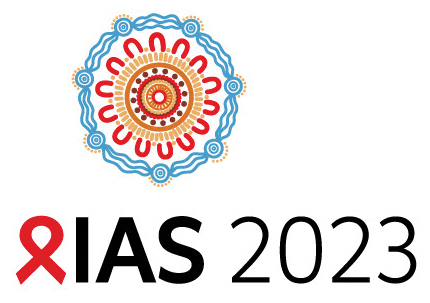Lifesaving antiretrovirals do come with some downsides for people living with HIV: in some cases, they’re faced with comorbidities. For example, although highly effective in suppressing HIV, integrase inhibitor-based antiretrovirals (INSTIs), now the preferred first and second line antiretroviral therapy, have been associated with an increased risk of diabetes as well as weight gain and increased body mass index (BMI) compared to other therapies.


One session at IAS 2023 explored several comorbidities and what kind of interventions might make a difference. Presenter Sherika Hanley, a family physician and lecturer at the University of KwaZulu-Natal in South Africa, shared data on a study exploring whether lifestyle changes could lower cardiovascular (CVD) risks for women with HIV. Hanley explained that women with HIV (WHIV) face an added burden of obesity and hypertension, particularly in under-resourced settings. “WHIV have higher odds of developing metabolic syndrome comprised of central obesity, elevated blood pressure, lipids and blood glucose, thereby doubling the risk of CVD compared to men,” she said. “As a result, CVD has surpassed HIV as a leading cause of death in women.”
Hanley shared findings from the ISCHeMiA study, which looks at integration of cardiovascular disease screening and prevention in the HIV management plan for women of reproductive age, and assessed the effectiveness of regular screening and lifestyle modification interventions in modifying CVD risk factors in South African WHIV. South Africa has one of the highest rates of HIV in the world.
All women in the study were 18–50 years old (with a mean age of 36 years) and had been in HIV care for one year. Women in the intervention arm received a lifestyle modification advice sheet, which was emphasized at subsequent visits. Women with a high BMI, hypertension, diabetes and high cholesterol levels were referred to a dietitian. Women in the control arm continued their management per standard of care with no intervention at a primary healthcare clinic. Of the 372 women enrolled, there were 149 in the intervention arm and 120 in the control arm, all of African descent, and all in the township of Umlazi in the South African province of KwaZulu-Natal, which has the second highest prevalence of HIV in the world. Follow-up was 32 months.
The intervention arm advised women on dietary modifications, which included reduction of salt, carbohydrates, and high fatty kind of foods, alcohol reduction, smoking cessation, and exercise. “They were advised to exercise at least 30 minutes a day, such as including brisk walking into their work activities.”
The intervention was a modest success. Women in the intervention arm increased physical activity slightly, Hanley said, and they had a modest benefit in HDL cholesterol and blood glucose levels. HDL levels in the intervention arm improved significantly from abnormal to normal levels. However, there was no effect on obesity. In fact, BMI increased significantly—not just in the intervention arm, but in the control arm as well. Women in the control arm saw declining health—more required immediate intervention for elevated LDL cholesterol levels and many were newly diagnosed with diabetes and hypertension.
“Fifty-two percent of women referred to the dietician actually attended qualitative analysis at one-year post enrollment, and they identified several barriers to lifestyle change, including financial limitations, work commitments, lack of social support, poor body image perception and lack of insight into CVD risk.”
Hanley noted that women in this environment faced high barriers to lifestyle changes, including poverty, limited access to health food and lack of safe spaces for exercising.
While the study showed missed opportunities, “the findings encourage the continued efforts towards lifestyle interventions in the prevention of CVD in women with HIV, who are characterized by higher levels of inflammation,” Hanley said. She added that HIV services still could be the locus of CVD risk prevention, even in under-resourced settings. What’s needed, she emphasized, is a person-centered multidisciplinary approach that empowers clients. Such an approach would offer clients “the opportunity to select their own targets, profiling households and communities and creating champions and strengthening healthcare provider and user relationships. Interventions needed to be sustainable, adaptive, and culturally sensitive, with robust long-term monitoring of CVD risk.”
HIV prevention: Novel approaches, promising findings
Oral PrEP has been a key HIV prevention tool since its rollout more than a decade ago. Now, with uptake less than HIV advocates had hoped, plus new options (long-acting injectables), researchers have been looking into how to encourage more people to use this greater variety of options. One panel at IAS 2023 explored different ways how PrEP use could be affected, including the accuracy of HIV testing, the role of race in PrEP adherence and the likelihood that PrEP could lull users into a false sense of security regarding bacterial STIs.
Positive predictive value of HIV serological tests in HPTN 084 trial
Two speakers presented data from the HPTN 084 trial, a safety and efficacy study of Long-Acting Injectable Cabotegravir (CAB-LA) Compared to Daily Oral TDF/FTC for Pre-Exposure Prophylaxis (PrEP) in HIV-Uninfected Women. First, Mina Hosseinipour, an infectious diseases physician and professor of medicine at UNC-Chapel Hill, shared data evaluating the positive predictive value of the HIV serological testing.
As CAB-LA is rolled out, interpreting HIV status will require strategies for confirmatory testing, counseling and transition planning to either ART or resumption of PrEP, but while HIV serology tests have a high positive predictive value, antigen/antibody tests have shown a very high number of false positive results, and had low positive predictive value, particularly for those on cabotegravir (CAB).
HPTN 084, a phase three randomized control trial, showed that injections of CAB every eight weeks are effective for PrEP in women and superior to daily oral TDF/FTC. But HIV diagnosis in the context of PrEP use may be complicated by both false positives and false negative tests, Hosseinipour said. “False negative results… could result in delayed ART initiation or emergence of resistance. However, false positives could result in incorrect initiation of lifelong ART, implications for interruption of effective PrEP and the complex counseling that our sites will be faced with when seeing such clients with discordant results.”
Most of the study’s sites were in low-income settings where PrEP will be rolled out and use a WHO-recommended algorithm for testing: serial testing of three tests, the first having high sensitivity, and the second two would have high specificity, with a goal of 99% positive predictive value or higher. Hosseinipour and her team evaluated the positive predictive value of HPTN 084 site-based testing to guide HIV treatment initiation. Out of 20 websites, 14 elected to do two rapid point-of-care tests and six used a point-of-care test. All 20 sites did a lab-instrumented antigen/antibody test, which was available some days later. Any reactive tests prompted confirmatory testing at both the site and the full battery of tests done by the HPTN central lab.
Evaluating more than 30,000 tests over 67,000 visits, the team focused on 159 participants who had 162 reactive test results: of the 159, 88 were false reactive, essentially equal in the CAB and Truvada arms. But the positive predictive value of these results was consistently lower in the CAB arm—as low as 15 percent for any reactive test. “With a single reactive HIV test and the high frequency of false positive testing, programs should anticipate the need for further testing, counseling about false positivity and plans to resume PrEP after excluding HIV,” Hosseinipour said.
“Two reactive tests of different types [were] still highly predictive of having seroconverted, so we can have confidence that if you have two tests that are reactive that you should convert to ART,” she added.
What factors determine choice of PrEP?
In another presentation using HPTN 084 data, Sinead Delany-Moretlwe, research professor and research director at Wits RHI at the University of the Witwatersrand, Johannesburg, spoke on the same trial, but with a focus on PrEP choice. Delany-Moretlwe and colleagues assessed reasons for the initial PrEP choice and factors associated with that choice.
The majority of participants—78 percent—chose CAB-LA for PrEP, and that choice was influenced by product attributes, personal risk factors and the social context, Delany-Moretlwe said. The overwhelming reason participants chose CAB-LA was a dislike of pills and preference for injections, followed by the convenience. People who chose TDF/FTC did so primarily because of a dislike for injections and concern about injection site pain. “We think these data are important, particularly for product introduction programs and the region, and serve as a reminder to ensure that health care providers support product choice aligned with user values and preferences,” Delany-Moretlwe said
Delany-Moretlwe said future PrEP programs must include approaches to support shared decision making for PrEP clients, and support PrEP choices that align with user values and preferences in order to ensure high PrEP continuation during periods of risks.
“The more that people are able to make product preferences, that product choices align with their values and preferences, the more likely they are to stick with that product,” she said. “Providers are very influential, but also what’s happening in your community may be determining people’s choices.”
How race impacts PrEP non-adherence for MSM and trans women in Latin America
Lucilene Freitas from the Evandro Chagas National Institute of Infectious Diseases presented a study exploring the racial disparities in HIV incidence and PrEP non-adherence among gay and other men who have sex with men and transgender women in Brazil. Highlighting the disparities in health care in Brazil, Freitas noted that Black Brazilians “face severe health inequalities due to the country’s historical legacy of slavery,” and that health disparities rooted in structural racism have persisted since the colonial era. Her study revealed, not surprisingly, that because of this structural racism and racial disparities in Brazil, HIV rates and PrEP non-adherence were higher for Black and Pardo (in Brazil, defined as “brown” or mixed African, European and Indian ancestry).
Freitas shared results from the ImPrEP study conducted from February 2018 through June 2021, in which 3,928 participants were enrolled at 14 sites in 11 cities across Brazil, Mexico and Peru. Over 94% were men who have sex with men (MSM) and just under 6% were transgender women (TGW). What researchers found was not surprising: rates of PrEP non-adherence varied significantly by race. Non-adherence for Blacks was 26.2%, 24.2% for Pardo and 18.7% for Whites. Transgender women and younger participants, aged 18–24 years, had higher rates of PrEP non-adherence across all racial groups. She said the results show the need for studying health outcomes disaggregated by race, and public policies to mitigate racial and social inequalities in Brazil.
Freitas’s recommendations: “Public policies to increase healthcare equity and accessibility, and tailored interventions to improve PrEP adherence among vulnerable populations,” in addition to fostering social justice though collective efforts.
How does PrEP affect bacterial STIs among MSM and trans women?
Bacterial STIs are increasing globally and disproportionately affect MSM and transgender women, in part, it has been theorized, due to use of PrEP to prevent HIV. Jorge Gallardo-Cartagena, a researcher at Universidad Nacional Mayor de San Marcos, Peru, and his team set out to determine if there was an increase in bacterial STIs (bSTI) among PrEP users and whether any increase could be explained at least partly by risk compensation. Risk compensation means an increase in risky behaviors when an intervention—PrEP, for one—reduces a person’s, or even a population’s, perception of risk.
In a post-hoc analysis of data from HTVN 704 and 085 trials of participants receiving at least one infusion and had bSTI results, researchers categorized bSTI prevalence by subgroups and categorized bSTI incidence rates according to PrEP use. Determining the effect of PrEP use on bSTI incidence, they found that, first, bSTIs were very high in Latin America compared to the U.S., which could be partly explained by reduced access to bSTI diagnostic testing throughout Latin America. Regarding the effect of PrEP, the team found that PrEP users had, not surprisingly, a lower incidence of HIV, but higher rates of bSTI while on PrEP, “which may suggest risk compensation,” Cartegena said. His recommendations: advance STI prevention in HIV vaccine research—for example using DoxyPEP—and use of “tailored strategies to increase PrEP uptake among those with higher vulnerability.”
“We know that behavioral risk for HIV is not the same thing as behavioral risk for STI acquisition,” he said. “So, one of our next steps will be to evaluate individual behavioral risk factors, and see if this influences the effect of abuse on incidence or maturity.”



